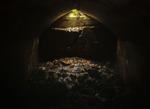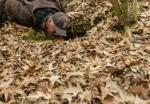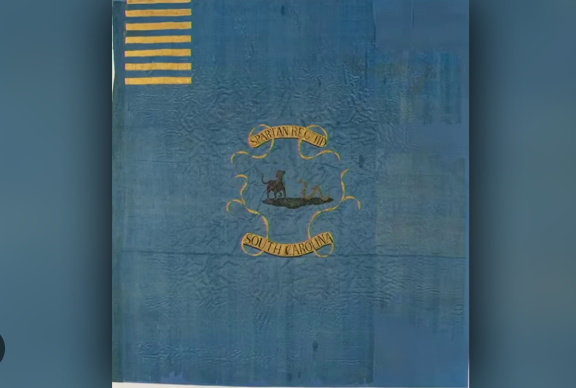SOUTH CAROLINA: On Jehossee Island, Rare Remnants of History and Big Potential For Research
JEHOSSEE ISLAND — This uninhabited island in the Lowcountry’s ACE Basin was the site of one of the largest rice plantations in the South.
Today, alligators swim in what used to be rice fields. Shorebirds fly overhead. In the summer, the air gets thick with mosquitoes.
The entire island is eligible for the National Register of Historic Places as a historic district, and a building still standing from the plantation is one of only a few structures like it in the South, but there are no historic markers or interpretive materials there, and it isn’t open for the public to visit — at least, not yet.
A group of preservation advocates, historians, archaeologists and conservationists have been working to ensure that the historic remains on Jehossee are preserved, researched and interpreted.
Late last year, work began on rehabilitating the one extant building, a 19th-century overseer’s house.
Within sight of the house is the only other major structure remaining: a brick rice chimney that was part of one of three mills on the island of about 4,500 acres.

Beekman Webb, lead restoration contractor, locks the door to the overseer’s house at the former Jehossee Plantation on Feb. 28, 2022. The house was turned into a hunting lodge in the 1900s. Gavin McIntyre/Staff
Other remnants are scattered around the island, often hidden from plain view behind forest that’s grown over the years. Between the trees and brush that cover where the main house had been before it burned down, there are clues of what had been there: non-native plants and stone pedestals left over from an ornamental garden, a chimney from a billiard room.
The undisturbed island presents a rare chance to learn about rice cultivation in the Lowcountry and the lives of the enslaved people who shaped the landscape there. Their labor is still visible. Many of the dikes, trunks and canals created for rice production are still intact on Jehossee today and are now part of vital habitat for shorebirds, waterfowl and other species. And, while the homes where hundreds of enslaved people lived are no longer standing, the ground beneath that site likely contains items that would reveal details about their lives.
Since 1993, Jehossee Island has been owned and managed by the U.S. Fish and Wildlife Service. The island is part of the Ernest F. Hollings Ace Basin National Wildlife Refuge, but it is not open for the public to visit.
Before coming under federal ownership, Jehossee had been in the hands of descendants of Gov. William Aiken Jr. of South Carolina, who acquired the core tract of Jehossee Plantation in 1830 from Charles Drayton. Aiken later bought more land, expanding the plantation.
The overseer’s house on Jehossee is believed to have been built around 1830. It’s a rare structure to find still standing, said Brent Fortenberry, director of preservation studies at Tulane University in New Orleans.
The building on Jehossee is one of just 35 overseers’ houses in the country that have been recorded, and it’s one of only four that stands intact, said Fortenberry, who’s leading a team researching the historic resources on the island.
The house survived up to this point, not because its historic significance was recognized, but because it served a purpose. Up until the island came under the ownership of the Fish and Wildlife Service, it was being used as a hunting lodge.
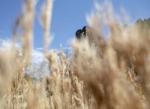
The rice chimney operated by enslaved people still stands after more than 100 years at the former Jehossee Plantation, Feb. 28, 2022, on Jehossee Island. Gavin McIntyre/Staff
In 2018, conversations began on how to preserve and protect the overseer’s house and the brick rice chimney. The need to stabilize the house, in particular, was becoming more urgent, with worsening hurricane seasons and the increasing threat of sea rise.
The nonprofit Preservation Society of Charleston, the ACE Basin Task Force and the Fish and Wildlife Service came together for those conversations and, eventually, the actual planning and funding of the project. Drayton Hall and the Historic Charleston Foundation, which both manage properties connected to Jehossee’s former owners — Charles Drayton owned Drayton Hall in Charleston and Aiken was an owner of the Aiken-Rhett House that’s now a museum in downtown Charleston — were also involved in talks.
After thoroughly measuring and documenting the overseer’s house last spring, rehabilitation work began in the late fall.
Much of the initial work of preserving the house involved removing things that had been added onto the building over the years. An addition in the back of the house was torn down. The metal roof installed over the house’s original wooden shingles was removed and replaced, and vinyl siding was taken off the exterior. Repairs were made to the foundation and original siding, window sashes were replaced and the chimneys were repointed.
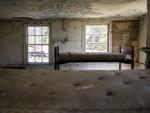
Bunk beds can be seen inside a room at the overseer’s house at the former Jehossee Plantation, Feb. 28, 2022, on Jehossee Island. Gavin McIntyre/Staff
The next step will be painting the entire exterior, said contractor Beekman Webb. Fortenberry’s team is doing paint analysis on the building to determine the original color that was used.
The research team is also working to map out what the nearby mill site would have looked like, and they’ve surveyed the main settlement where Jehossee’s enslaved population lived.
The remains of the settlement offer one of the most significant opportunities on Jehossee for further research, in part, because of its sheer scale.
–postandcourier.com


